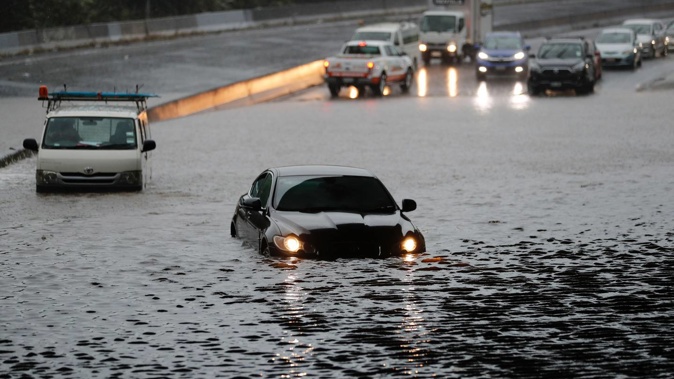
La Nina and El Nino events are becoming more frequently strong as our planet heats, researchers have found, as a separate UN report warns the symbolic 1.5C threshold could be crossed as soon as 2027.
A study by Australia’s national science agency CSIRO, has shed new light on how climate change has been influencing the large-scale pattern known as El Nino-Southern Oscillation (ENSO).
A key driver of climate variability - and measuring the movement of warm, equatorial water across the Pacific Ocean – ENSO is better known by the opposite, weather-influencing patterns at each end of its seesaw.
That’s La Niña – which just delivered New Zealand three years of record-breaking warmth and rainfall – and El Niño, which may instead make for a cooler, clearer winter for much of the country when it forms up over coming months.
Globally, however, El Niño is known to bring warmer temperatures – and it’s almost certain that one of the next few years will prove the planet’s hottest on record, with the big driver arriving with a climate change tail-wind.
Scientists are still debating whether a warming planet means a trend toward El Niño or La Niña – modelling by the UN’s Intergovernmental Panel on Climate Change favours the former, while some recent studies suggest a skew to the latter.
But the new research at least finds that climate change has been directly affecting the strength and frequency of El Niño and La Niña events, over more than half a century.
“This research has made the human fingerprint on climate change clearer by providing evidence that greenhouse gases started impacting ENSO as far back as 1960,” said the study’s lead author, Dr Wenju Cai.
“It provides a critical link between the current climate record, and that of the paleo period, to show that we are experiencing a vastly different climate to that of the distant past.
“The findings can also help us understand how ENSO will continue to change in a warming world, given sea surface temperatures are continuing to increase in warming.”
Rising greenhouse gas emissions had led to more heat being trapped in the climate system, which in turn forced sea surface temperatures to warm faster than the ocean water below.
Change in vertical temperatures of the equatorial Pacific happened to play a significant role in influencing the development of El Niño conditions, via climate feedback loops in the ocean-atmosphere system.
The frequency of strong El Niño events, in turn, led to more frequent and stronger La Niña events.
The study was based on an analysis of results from more than 40 major models, with the team comparing historical simulations between 1900 and 1960, and 1960 to 2020.
It didn’t capture the recent “triple dip” La Niña – something scientists have suggested may have been triggered by Australia’s catastrophic bushfires – nor the coming El Niño, which may prove another strong event.
This week, the World Meteorological Organisation (WMO) warned that a combination of ongoing climate heating and El Niño may push global temperatures into “uncharted territory”.
“This will have far-reaching repercussions for health, food security, water management and the environment,” said the WMO’s Secretary-General, Professor Petteri Taalas.
For at least one of the next five years, the UN agency gave a 66 per cent chance of the annual global surface temperature temporarily exceeding 1.5C above pre-industrial levels – a symbolic threshold the UN Paris Agreement aspired to limit warming to.
The chances of temporarily passing that milestone had risen steadily since 2015, when it was close to zero, reaching a 10 per cent probability for the years between 2017 and 2021.
The WMO also gave a 98 per cent likelihood that at least one of next five years would be the world’s warmest on record - while arctic heating was predicted to be more than three times higher than the global average.
“Global mean temperatures are predicted to continue increasing, moving us away further and further away from the climate we are used to,” said the new report’s leader, Dr Leon Hermanson, of the UK’s Met Office.
For New Zealand specifically, the effects of El Niño were likely to be much different to the global picture, climate scientist Professor Jim Salinger said.
La Niña’s dominance since the start of the decade had contributed to the country’s two latest warmest years on record (2022, 2021); three back-to-back record warm winters (2020, 2021, 2022); our wettest year (2022); and a summer marked by extreme deluges.
That had also come in step with frequently-strong marine heatwave conditions surrounding the country.
“El Niño tends to favour cool seas around New Zealand – so I wouldn’t expect temperatures to pass what we recorded in 2022, but it may do,” Salinger said.
But Salinger stressed that El Niño didn’t mean temperatures that were below average nationally; it’s been six years and four months since Niwa recorded a month cooler than the 1991-2010 baseline.
“Temperatures are still probably going to be a little bit above average, but nothing spectacular,” he said.
“It also may prove much wetter in areas like the west and south of the South Island, and drier up north, in regions like Northland.”
Take your Radio, Podcasts and Music with you









